Page 1 of 1
accidental stacking in chords
Posted: 17 Jun 2024, 16:54
by dircknagy
Hi all
I'm sorry if this has already been answered. I couldnt find the answer using the search function, however.
What are the rules regarding accidental placement in a very dense chord? How are they stacked?
I was under this impression:
- start with the highest note, place accidental
- the next note below which is a 7th or more away from the top note gets an accidental in the same column as the top note
- Then, go to the 2nd highest note. this accidental will be in a column to the left
- continue as before
Does anyone know if there is a definitive rule, or, is this determined by "house styles" ?
Kurt Stone doesnt say anything about this, but i'm sure its written down somewhere...
thanks!
peace!
dirck
Re: accidental stacking in chords
Posted: 18 Jun 2024, 14:52
by Fred G. Unn
dircknagy wrote: ↑17 Jun 2024, 16:54
[*]Then, go to the 2nd highest note. this accidental will be in a column to the left
Generally speaking you'd place the top accidental to the left of the notehead, then the bottom left of that, then 2nd from the top, then 2nd from bottom, etc., working inward on the chord.
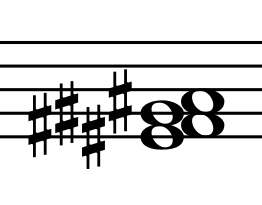
- accidentals.png (6.81 KiB) Viewed 7071 times
If you work from the top, "then go to the 2nd highest note," it really looks odd and can take up a bit more space.
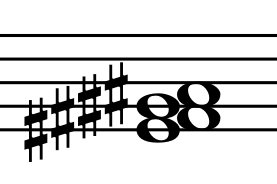
- topdown.png (6.79 KiB) Viewed 7071 times
Octaves should always align though, and intervals of a 7th or more can be aligned in the same column, so more complicated situations can quickly arise. You definitely should not be working top-down moving to the left though.
Re: accidental stacking in chords
Posted: 18 Jun 2024, 15:36
by dircknagy
thanks. that makes sense too.
Re: accidental stacking in chords
Posted: 18 Jun 2024, 16:19
by Anders Hedelin
I found something very similar to what both of you, dircknagy and Fred, say, in Gould's Behind Bars, pp. 89-91. I don't know if I have the right to copy it here but I thought I should mention it.
An aside: Some seem to want to distance themselves from Gould, declaring that she "is not an authority". If that means you don't agree with 100% of what she says, that's a very trivial point.
Re: accidental stacking in chords
Posted: 19 Jun 2024, 03:12
by John Ruggero
The complicated situations mentioned by Fred G. Unn and Gould can even become too much for software. Here's a dilly I just found by experiment in Dorico:
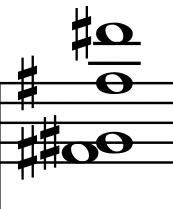
- Accidentals.png (22.95 KiB) Viewed 7027 times
So one must also bear in mind two guiding principles:
Main priority: keep the accidentals as compact (in as few columns) as possible.
Secondary priority: keep the accidentals as close to the corresponding notehead as possible, with the greatest priority given to topmost note, then the bottommost note etc. as mentioned in the Fred G. Unn's rule.
Re: accidental stacking in chords
Posted: 19 Jun 2024, 08:16
by benwiggy
The advantage of Dorico is that you can select the 'floating' accidental and set its column value directly, rather than just moving it graphically.
If you set the column to 0, then the top accidental would move to column 1 to avoid collision. (I know that's not what you would want in this instance, but it shows how Dorico works.)
Re: accidental stacking in chords
Posted: 19 Jun 2024, 11:33
by John Ruggero
Dorico's Accidental column set to 1 one produces this:
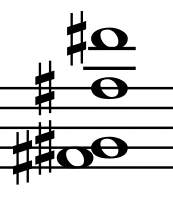
- 1.png (23.18 KiB) Viewed 7005 times
So it has to be tweaked with an offset setting to achieve this:
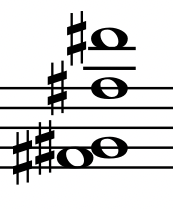
- 2.png (23.06 KiB) Viewed 7005 times
Which is pretty much what Dorico gives for this:
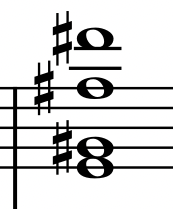
- 3.png (23.25 KiB) Viewed 7005 times
The problem arises when the lower interval becomes a second:
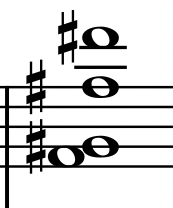
- 4.png (22.64 KiB) Viewed 7005 times
In such cases, I think that chord is best broken as two (or more) two-note chords (or three-note etc.) with the "rules" applied to each part separately.